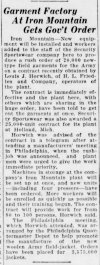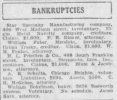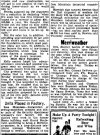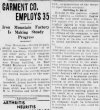Skyhawk
Well-Known Member
Hey guys, I have been researching SAT for quite some time. I make some jackets that are attributed to them and I am currently working on the 1932 A-2 contract.
The question I have not been able to find an answer for is, when did they start making jackets? I have discussed this with some well known repro makers. The conclusion has been sometime in the early 1930's. With a fair amount of civilian flight jackets produced in the mid 1930's. I have not found any jackets produced before 1930. What are your thoughts on this subject?

The question I have not been able to find an answer for is, when did they start making jackets? I have discussed this with some well known repro makers. The conclusion has been sometime in the early 1930's. With a fair amount of civilian flight jackets produced in the mid 1930's. I have not found any jackets produced before 1930. What are your thoughts on this subject?
Last edited:






